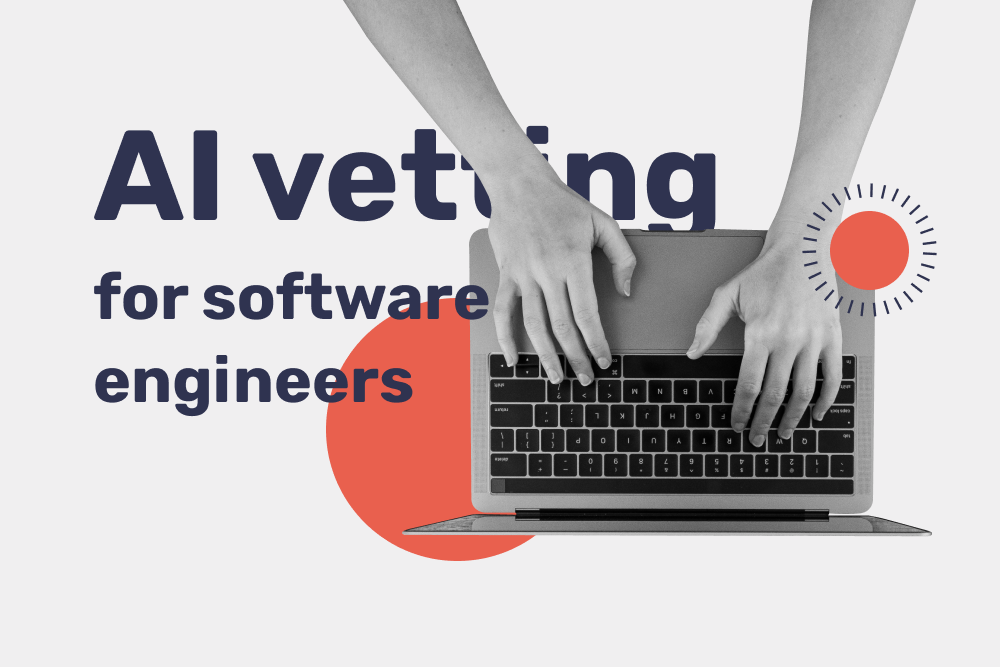According to Mercer Global Talent Trends 2022 report, 44% of executives believe the pandemic helped them realize the need for a fundamental shift around the work, their workforce and workplace. In 2022, 97% of organizations are also planning a significant change in their approaches to talent hiring, software development and digital transformation, considering the alternatives to traditional IT services outsourcing. Remote staffing becomes one of the top tactics to consider when headhunting for the best tech talent, so let’s discuss the pros, cons and risks of both staffing and outsourcing to choose the right path in the post-pandemic times.
Switch to more effective hiring with Bridge! Talk to our tech-savvy sourcers now to find out how we can help.
How has the pandemic changed the way companies hire?
Remote work is here to stay, gradually evolving from a trend to a new norm. For example, 18% of the working population and 16% of companies in the world are now fully remote. What’s more, remote work adoption is projected to grow, and as claimed by Bloomberg, in ten years, it will be as normal and usual as office work was before the pandemic, promising better work-life balance opportunities for employees and greater cost savings for companies.
However, there are no benefits without challenges. In response to the rise of global hiring, the competition for top talent will grow, additionally triggered by the best-skilled workers’ shortage. Given that the ICT (Information and Communication Technology) industry is amongst the ones with the largest remote work adoption, how should tech companies hire in the post-pandemic times?
Recently, software development outsourcing was the best answer. Compared to hiring in-house, the benefits of outsourcing software development managed to overweight the risks and upcoming costs.
But is it still wise to outsource software development when it is projected that 70% of the workforce will work remotely already in 2025? Isn’t it better to have your own remote team instead of hiring it for a project-based tech service?
Let’s compare remote staffing vs outsourcing, keeping remote work trends and benefits in mind.
What is software development outsourcing?
Software development outsourcing is one of the possible options to hire talent for a tech company. Standing for hiring for a service instead of hiring people, it has long been one of the best tactics to develop software remotely. Below are the main advantages both startups and mature companies appreciated when opting for software development outsourcing.
- A lot of great software development outsourcing destinations to choose from. For instance, Western European companies frequently outsourced to Eastern Europe to stay better aligned with outsourced teams and avoid the need to work out time zones. Also, US projects appreciate LATAM countries for their cost-efficiency and great tech talent pools. Last but not least, projects on a budget can build an MVP at the lowest cost possible by outsourcing their software development to the Far East.
- Cost-efficiency. Depending on the software development outsourcing destination you choose, you can save up to 60% of the development budget because of the salary gap. For example, the monthly average software developer’s salary is $2380 (57,900 CZK) in the Czech Republic, while the monthly wage of a US-based programmer with the same skills is $7650.
- A better time to market. Compared to hiring remote employees on your own, software development outsourcing promises a better time to market. The reason is simple: you hire a ready-made team and get started with the development process right away.
- Flexible engagement models. There are also different types of outsourcing contracts, and each of them can be tailored to the project specifics. For example, a Fixed price contract is cost-effective for small and predictable projects; a dedicated development team fits the companies with great scalability projections, while a Time and Material contract is a wise choice for projects with a low level of predictability.
- Service-based software development. One of the main benefits of outsourcing remote work is that in this case, you don’t need to hire remote workers on your own and retain them, deal with payroll, or provide office space and equipment. All these responsibilities and tasks are covered by the software development outsourcing vendor.
However, software development outsourcing isn’t the only strategy to hire the best ICT specialists. Let’s take a look at another one.
What is remote staffing?
Compared to software development outsourcing, remote staffing means hiring remote employees on your own and building a remote development team that will be fully controlled and managed by your company. While IT outsourcing may still seem an easier way to go, the benefits of remote staffing are significant enough to give this hiring strategy a try.
- Global hiring. 84% of managers believe that having a fully remote team is totally fine. In post-pandemic times, the work people do matters more than the location and time zone they live in.
- Cost reduction. Compared to having an in-house team, a remote one is still more cost-effective because of the office and equipment cost savings. According to the research, companies can save $11,000 per employee per year when the latter works remotely at least half of the time.
- Better retention. According to the research, having a remote or at least flexible work option allows for reducing turnover by 50%. What’s more, remote workers are more productive, better engaged and usually more satisfied with their jobs compared to those working in-house.
- More control and communication options. While hiring a fully-managed remote team is one of the benefits of outsourcing, for some companies lack of control and communication options can be a significant drawback. Controlling, managing and communicating with your remote employees becomes easier when a remote team is your own working unit.
- Competitive edge. Remote staffing is an emerging trend triggered by the pandemic. It allows for adopting remote work earlier than competitors and hiring the best tech talent until more companies start adopting this hiring method.
Remote staffing vs software development outsourcing – risks and challenges
While both approaches imply assembling a tech team remotely, the risks and challenges are different.
Let’s take a detailed look.
| Challenge | Software development outsourcing | Remote staffing |
| Hiring best-fit candidates | The team members are chosen and hired by the vendor. Though, you can interview candidates on your own, replacing them can take some time. | You interview the candidates on your own and can make the best hiring choices from the very beginning of the project. |
| Team management and control | Your dedicated team is managed by the software development vendor and their in-house project manager. You can communicate with the team and control the development progress. | You fully manage and control your team at every development stage. |
| Transparency | Software development outsourcing will be transparent if you hire a trusted tech vendor. If failing to do it, there is a risk of overpaying and hiring less qualified team members than your project requires. | You can be sure that the remote development team members have the necessary expertise and that the work process is fully transparent. You track their working hours on your own. |
| Communication | In most cases, you communicate to the team via a Project Manager, or during daily/weekly meetings. | You communicate to your remote team directly, establishing the rules and practices everyone is comfortable with. |
| Data privacy and security | This risk is common for both software development outsourcing and hiring a remote team. However, the solutions are different. While in the case of software development outsourcing, you have to choose the vendor with an unspotted reputation, in the case of remote staffing, you will have to protect your data on your own by signing NDAs with them and developing internal data protection practices. | |
Overall, having your own remote team is less risky compared to hiring a dedicated development unit. Overcoming the risks of outsourcing, in turn, is also more challenging than in the case of remote staffing.
What’s more, yet in 2018, Deloitte stated that traditional software development outsourcing is dead. Instead, companies begin to leverage disruptive outsourcing solutions like Robotic Process Automation (RPA), cloud computing and cognitive automation. At the same time, adopting these technologies and making them business process-tailored are the biggest challenges the organizations face, so embracing disruptive solutions becomes less risky and more effective with a controlled, manageable and committed tech team.
From this point of view and taking the remote work trend, hiring a remote development team on your own is smarter than outsourcing the development process completely.
Overcoming remote staffing pitfalls with Bridge
Let’s be honest here, remote staffing also comes with challenges. 55% of executives globally find it difficult to hire the right talent at a reasonable cost quickly enough.
Struggling to Hire the Right Tech Talent? Here’s What’s Wrong With Your IT Staffing Strategy
Redesigning HR operations is also one of the priorities for modern organizations in 2022, so partnering with a talent sourcing vendor can be a good option to consider. Collaborating with a tech talent provider means an opportunity to cut costs, speed up the hiring process and leverage the hiring expertise of a company to ensure the best candidate-job match. We, at Bridge, can source technical candidates across three continents using data-driven staffing solutions and working as an extension of your in-house recruitment team.
Here is what we offer.
Sourcing-as-a-service
Sourcing-as-a-service is a technology-driven opportunity to source engineering talent five times faster and 60% cheaper compared to looking for candidates on your own. Our AI-powered sourcing engine comes with an automated talent pool analysis feature and allows us to find the best-fit candidates using detailed semantic search queries and filters.
Being 80% automated, our hiring technology is also highly effective for closing multiple positions faster – that’s why 50% of our customers choose this service for hiring several candidates and gathering full-fledged remote teams at a better cost.
Get started with tech-enabled talent sourcing right now by dropping us a quick call!
IT team augmentation
IT team augmentation is an opportunity that stays on the verge of remote staffing and outsourcing. The essence of the strategy is simple. In the case of talent shortage or increased workload, you can extend your in-house team with remote developers.
Bridge hiring experts would be happy to help you with this task as well, finding the candidates with the necessary skills and competencies to scale your in-house development team. You are welcome to interview the suggested candidates, hire the best ones, communicate to your extended team directly and manage the workflow in the way you consider the most effective for your project.
Grow your team and hire top tech candidates with our IT staff augmentation services!



